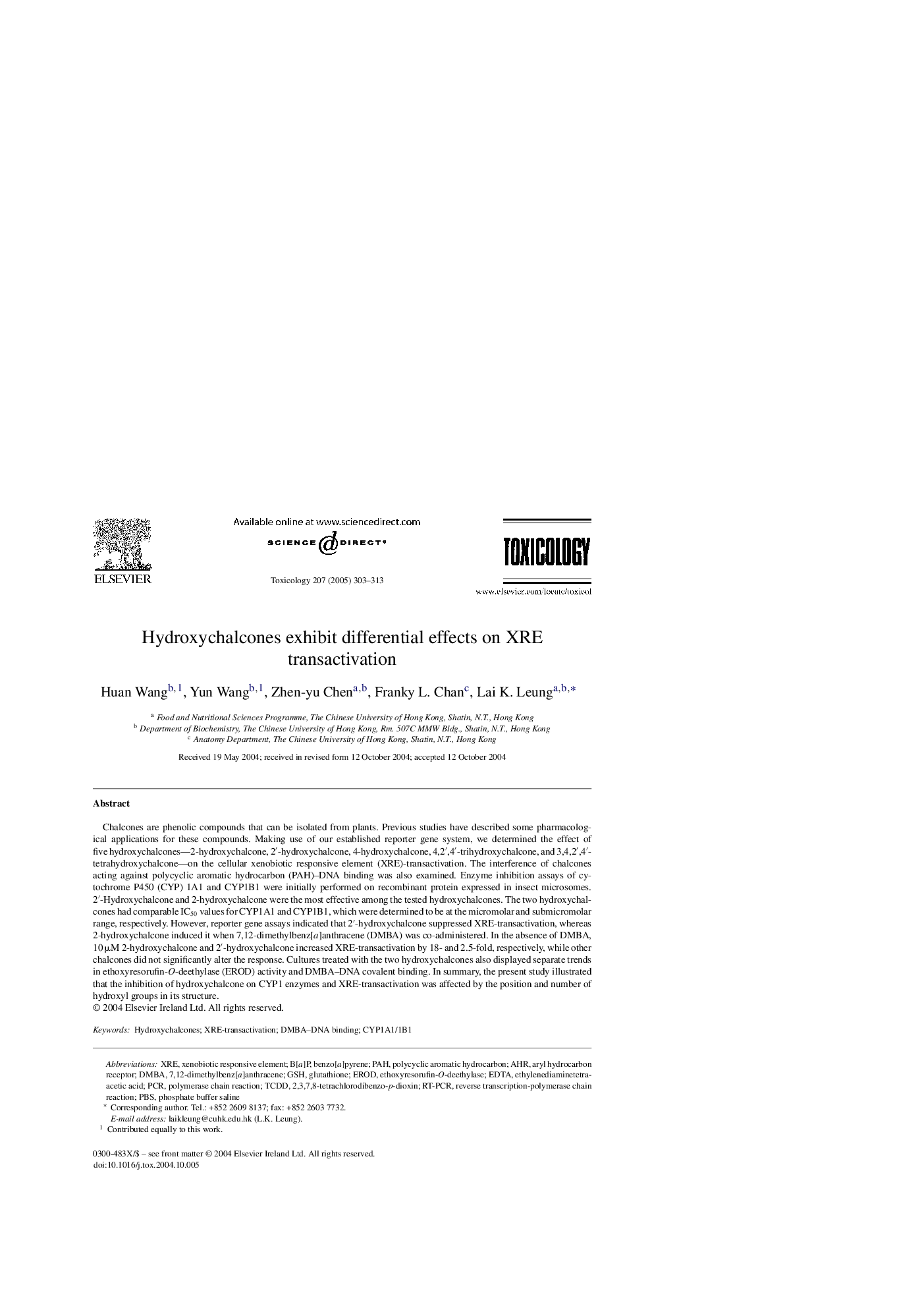| کد مقاله | کد نشریه | سال انتشار | مقاله انگلیسی | نسخه تمام متن |
|---|---|---|---|---|
| 9034751 | 1132641 | 2005 | 11 صفحه PDF | دانلود رایگان |
عنوان انگلیسی مقاله ISI
Hydroxychalcones exhibit differential effects on XRE transactivation
دانلود مقاله + سفارش ترجمه
دانلود مقاله ISI انگلیسی
رایگان برای ایرانیان
کلمات کلیدی
DMBAHydroxychalconesXREethoxyresorufin-O-deethylaseTCDDERODRT-PCRGSHPBSAHRPAH2,3,7,8-Tetrachlorodibenzo-p-dioxin - 2،3،7،8-تترا کلریدیبنزوپتوفان دیوکسین7,12-Dimethylbenz[a]anthracene - 7،12-Dimethylbenz [a] آنتراسنB[a]P - B [a] PEDTA - اتیلن دی آمین تترا استیک اسید ethylenediaminetetra-acetic acid - اسید اتیلنیدین تترا استیکBenzo[a]pyrene - بنزو [a] پییرنxenobiotic responsive element - عنصر واکنش زنجبیلphosphate buffer saline - فسفات بافر شورPolycyclic aromatic hydrocarbon - هیدروکربن آروماتیک چند حلقه ایreverse transcription-polymerase chain reaction - واکنش زنجیره ای رونویسی-پلیمراز معکوسpolymerase chain reaction - واکنش زنجیره ای پلیمرازPCR - واکنش زنجیرهٔ پلیمرازGlutathione - گلوتاتیونaryl hydrocarbon receptor - گیرنده آرویل هیدروکربن
موضوعات مرتبط
علوم زیستی و بیوفناوری
علوم محیط زیست
بهداشت، سم شناسی و جهش زایی
پیش نمایش صفحه اول مقاله

چکیده انگلیسی
Chalcones are phenolic compounds that can be isolated from plants. Previous studies have described some pharmacological applications for these compounds. Making use of our established reporter gene system, we determined the effect of five hydroxychalcones-2-hydroxychalcone, 2â²-hydroxychalcone, 4-hydroxychalcone, 4,2â²,4â²-trihydroxychalcone, and 3,4,2â²,4â²-tetrahydroxychalcone-on the cellular xenobiotic responsive element (XRE)-transactivation. The interference of chalcones acting against polycyclic aromatic hydrocarbon (PAH)-DNA binding was also examined. Enzyme inhibition assays of cytochrome P450 (CYP) 1A1 and CYP1B1 were initially performed on recombinant protein expressed in insect microsomes. 2â²-Hydroxychalcone and 2-hydroxychalcone were the most effective among the tested hydroxychalcones. The two hydroxychalcones had comparable IC50 values for CYP1A1 and CYP1B1, which were determined to be at the micromolar and submicromolar range, respectively. However, reporter gene assays indicated that 2â²-hydroxychalcone suppressed XRE-transactivation, whereas 2-hydroxychalcone induced it when 7,12-dimethylbenz[a]anthracene (DMBA) was co-administered. In the absence of DMBA, 10 μM 2-hydroxychalcone and 2â²-hydroxychalcone increased XRE-transactivation by 18- and 2.5-fold, respectively, while other chalcones did not significantly alter the response. Cultures treated with the two hydroxychalcones also displayed separate trends in ethoxyresorufin-O-deethylase (EROD) activity and DMBA-DNA covalent binding. In summary, the present study illustrated that the inhibition of hydroxychalcone on CYP1 enzymes and XRE-transactivation was affected by the position and number of hydroxyl groups in its structure.
ناشر
Database: Elsevier - ScienceDirect (ساینس دایرکت)
Journal: Toxicology - Volume 207, Issue 2, 14 February 2005, Pages 303-313
Journal: Toxicology - Volume 207, Issue 2, 14 February 2005, Pages 303-313
نویسندگان
Huan Wang, Yun Wang, Zhen-yu Chen, Franky L. Chan, Lai K. Leung,